Etchers who've worked exclusively with aluminium plates may not be familiar with this process because aluminium is 'self aquatinting,' in that if you place a large exposed surface of aluminium in the acid, it will not bite out the entire surface (thus creating an open bite) but rather bite out the metal in a grainy matrix which can hold ink.
Note: this tutorial has been written for those who have previously used some kind of aquatint, rather than for the complete beginner. However, if you belong to the latter category and nevertheless want to read on and find yourself confused, please do ask in the comments!
As the name suggests, this tutorial covers some aspects of the application of, and results that can be achieved with, a coarse aquatint. It's different from a 'fine aquatint' that the tone is more irregular and broken, and you can apply it without having to build yourself an aquatint box.
You need:
• Respirator / dust mask
• Lump resin / aquatint ground (this may be called something different depending on your location)
• Ziplock/plastic bag
• Wine bottle (empty) or a rolling pin which you never plan on using for food preparation again
• Jar
• Cheesecloth
• Old newspaper
• Heat gun
0) Powdered resin is bad for your health and loves to stick in your lungs. If possible, invest in a respirator, but at the very least wear a dust mask. Work somewhere like the garage or shed, where wind isn't going to blow the powder around, but which is away from fabrics and cushions. Cover your working surface with plenty of newspaper for easy clean up afterwards. When heating the resin, work in a very well ventilated area.

1) Put enough resin to fill your jar into a layer or two of ziplock bags.
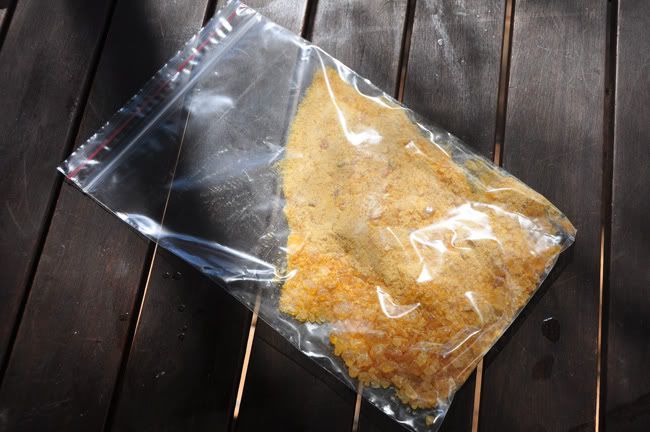
2) Cover it with a cloth, and using your wine bottle/rolling pin, crush the resin into a powder.
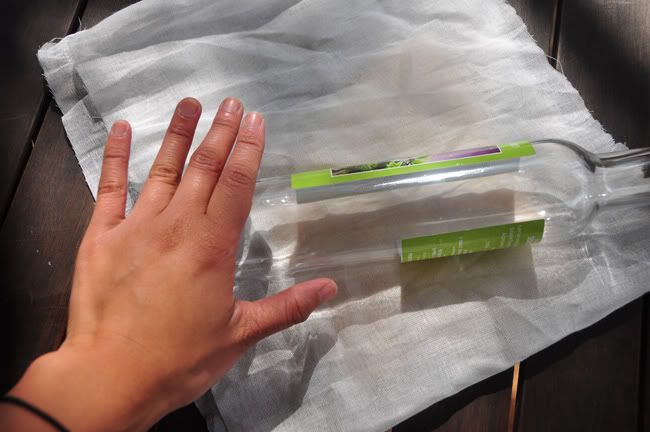
Before rolling and after rolling:
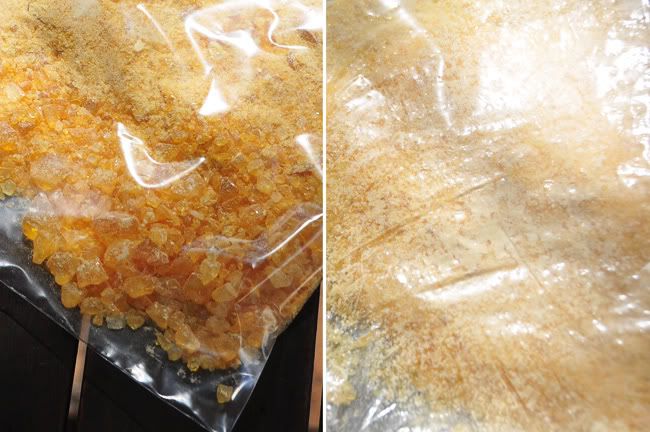
3) Pour the powder into the jar. Cover it with 2-5 layers of cheesecloth (depending on the size of the holes in the cheesecloth and how much powder you'd like to escape) and secure with a rubber band.
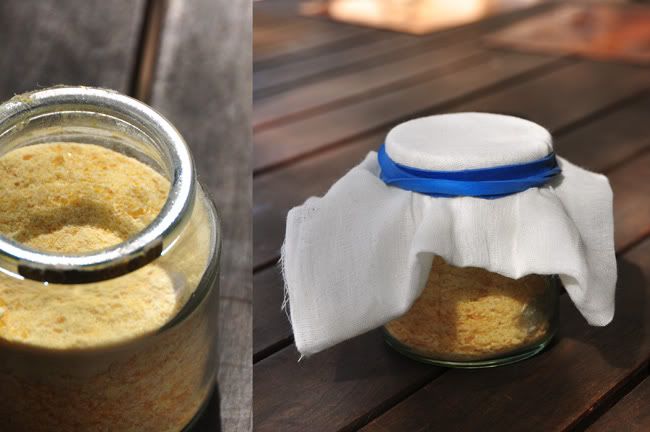
4) Place your degreased plate (resin doesn't stick to oil!) on the newspaper. Hold the jar over it and tap to let the powder fall lightly on the plate.

4.1) Remember that resin expands when heated, so don't overdo it or the acid will have nowhere to bite.
4.2) If you need to cover large areas with tone, you are more likely to get an even coverage if you hold the jar up high to lightly work larger areas of the image instead of trying to do small bits at a time. Note that this will also cause the powder to float about more, so protect your clothing and workspace extra carefully.
4.3) The powder is not attached to the plate at this stage. Be careful not to breathe on it or to let your movements disturb it.
A corner covered in resin:
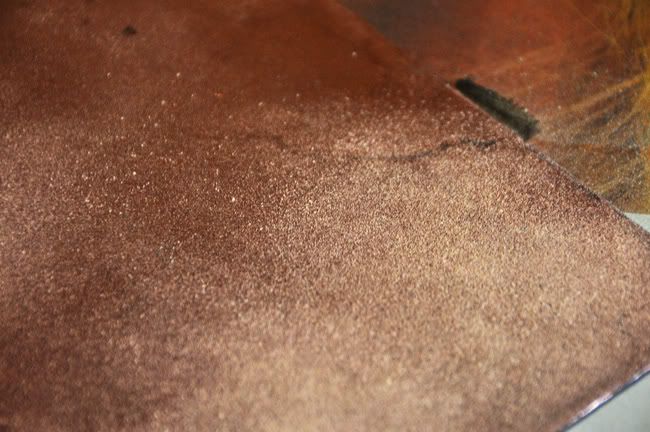
5) Carefully heat the resin from underneath with a heat gun. You'll know it's attached to the plate when it becomes transparent. Don't inhale the fumes.
6) After the plate has cooled, you will be ready to proceed in the same way as any other aquatint: block out the white areas; etch; clean off with methylated spirits; proof!
It takes a while to get the hang of exactly how much powder coverage there needs to be for the effect you're after. It is possible to get quite even results:
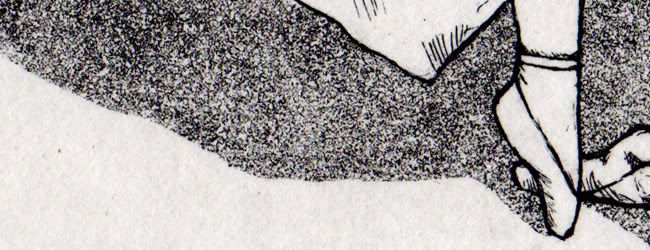
Or you could embrace the irregularity, in which case you get something like this:
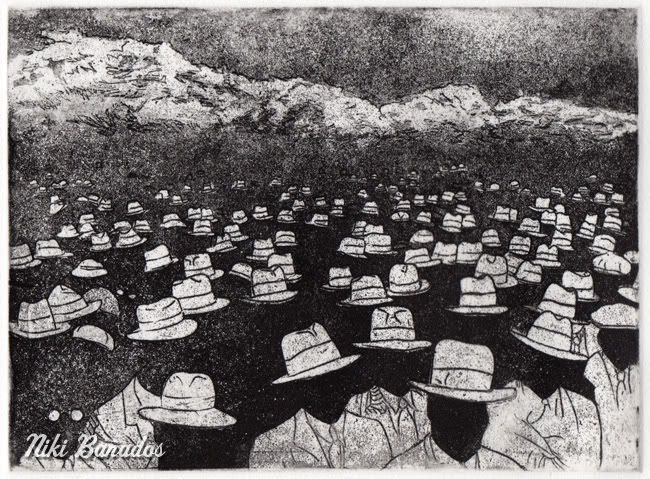
(Work is entitled Gathering in the Domain, 2011)
2 comments:
Thanks for the great tutorial, and I love your "Gathering" image!
I love your images Niki, but I'm finding it difficult to track down your etsy store. Do you still have one? It might be nice to have a link to the shops of the people who contribute to the printsy blog! Your name at the end of the article links only to your blogger profile and your store isn't linked there. In searching the people section on etsy, I don't find you either!
Post a Comment